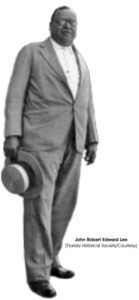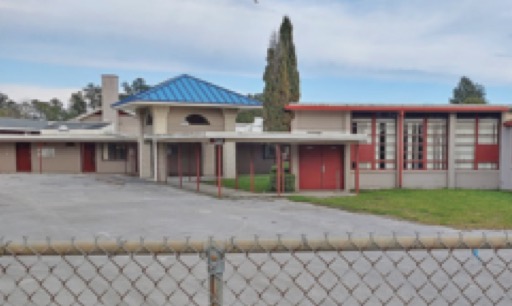 Christian Peterson
Christian Peterson
news@greenepublishing.com
The J.R.E. Lee Complex is a staple of the community in Hamilton County. It has a rich history throughout the county and is still used today for many community groups and events.
J.R.E. Lee stands for John Robert Edward Lee, who was born into slavery in Seguin, Texas, to John and Mary Lee. He began his educational career at Bishop College in 1883 with preparatory classes and graduated with honors in 1889. He was the third person to graduate with an Associates Bachelors Degree from Bishop College. He then moved on to become the principal of a small two-teacher school in Palestine, Texas. By 1891, Lee was ready to move on and went back to Bishop College for a decade, serving as the Dean of Men and professor of history, mathematics and Latin. He found love in 1895, when he married Ardelia Wilson and, together, they had seven children.
After all this, Lee began his climb to fame, proving himself resilient in a time where it was hard for African-Americans to prove themselves. In 1901, Lee became the head of the Division of Mathematics at Tuskegee University in Alabama, under the guidance of the famed Booker T. Washington. Two year later, he moved to Benedict College and became the professor of mathematics. However, in 1905, Lee found himself back at Tuskegee University as the Director of the Academic Department. The year before returning, he founded the National Association of Teachers in Colored Schools. On top of that, he served as the association's president for its first five years. Then, from 1915 until 1921, he was the principal of Lincoln High School in Kansas City, Mo. Lee's hard work during these years earned him many accolades. He was awarded three different honorary degrees, including a Master’s from Bishop College in 1903, a Legum Doctorate from Wilberforce University in 1918 for “his unselfish educational and humanitarian services,” and a Legum Doctorate from Howard University.
By 1921, Lee left education and continued his career as the extension secretary of the National Urban League. Then, in 1924, Jackson Davis, a famous principal and education specialist, recommended Lee to become the third president of Florida Agricultural and Mechanical University (FAMU). He was confirmed for the position and helped bring the school into the national conversation. He assisted in obtaining greater funding for the school, as well as accreditation. He also was able to help get larger salaries for teachers and administrators, proving his metal against Florida Governor Fred P. Cone, who was known for saying “No Negro was worth $4,000 a year.” By the time Lee left the university, he had helped FAMU construct 48 buildings, accumulate 396 acres of land, garner 812 students and add 122 staff members to their ranks. He died of pneumonia on April 6, 1944.
The J.R.E. Lee Complex, named after Lee, is located at 4280 SW CR 152, in Jasper. The records of the early days of the school are not fully complete, but show it was originally founded in the 1930s. The school began as a black-only school during the segregated era of the South. The building that is known today was not erected until 1945. However, in 1942, the J.R.E. Lee Complex had its first graduating class, consisting of four students: Odell Cross, Robert Sowell, Annie May Clarity and Rosa Lee Sowell. Although there were no graduates in 1943, from 1944 and on, there was a graduating class every year. Records show Jomills Henry Braddock was the principal until 1957. Between 1957 and 1958, the principal was Andrew Sims; James Jennings was the principal from 1958 until 1963 and Manscree Sanders served as the principal from 1963 until 1970.
In 1970, the schools became integrated, and the building began serving as Hamilton Middle School. The school then closed as Hamilton Middle School and combined with Hamilton High School in their new larger building. At this point, the complex served as the Hamilton Administrative Office. This also eventually moved, and the school fell into disrepair. However, the community was not in support of watching such a historical location fall into obscurity. Several residents banded together and began fundraising until there was enough money to purchase the property.
Today, the complex serves as a community complex. It is run under the leadership of local Pastor J.T. Billy Simon and a board of directors. The board secures funding through donations and rentals. They also direct activities, clean up and other events. They hold a plethora of youth activities, luncheons, senior citizen activities, funeral services, family reunions and use it as a general meeting place for the community. “The community is happy to see the historical location used again,” said Paula G. Williams. For those interested in using the complex, contact Karen Bristol or Charlene Robinson through their Facebook pages.

